Map of Hanoi - Vietnam’s Millennial Capital of Culture and Heritage
When people think of Hanoi, they often picture the nostalgic charm of the Old Quarter and the historical relics from centuries of dynastic rule. But the city is much more than that. Hanoi also pulses with the vibrant energy of a modern, fast-developing metropolis. Its cultural richness, combined with youthful dynamism and bustling life, creates a multi-faceted beauty that captivates every traveler who sets foot here.
Geography & Administrative Overview
Located in Northern Vietnam on the banks of the Red River, Hanoi serves as both the capital city and the heart of the country’s cultural and political life. It shares borders with several provinces, including Bac Ninh, Hung Yen, Vinh Phuc, Hoa Binh, and Ha Nam, creating a strategic and accessible location in the Red River Delta.
Here are some key geographical and administrative facts about Hanoi:
Total area: approximately 3,359 km²
Population: over 8.6 million people
Topography: mainly lowlands, with some hills and riverside areas in the outskirt
Region: Northern Vietnam – Red River Delta
Administratively, Hanoi includes:
1 capital city: Hanoi (municipal government under central authority)
30 subdivisions:
12 urban districts (quận): Ba Dinh, Hoan Kiem, Tay Ho, Long Bien, Cau Giay, Dong Da, Hai Ba Trung, Thanh Xuan, Hoang Mai, Ha Dong, Nam Tu Liem, Bac Tu Liem
1 town (thị xã): Son Tay
17 rural districts (huyện): Gia Lam, Dong Anh, Soc Son, Me Linh, Thanh Tri, Thanh Oai, Thuong Tin, Phu Xuyen, Ung Hoa, My Duc, Chuong My, Quoc Oai, Hoai Duc, Dan Phuong, Ba Vi, Phuc Tho, Thach That
Note: Some districts have merged recently due to administrative reforms. Always check the latest official map for the most accurate district boundaries.
Climate & Best Time to Visit
Hanoi experiences a four-season climate, each with its own distinct charm. This makes the capital city worth visiting at any time of the year:
Spring (February–April): Hanoi’s spring is characterized by cool weather and occasional light drizzles—affectionately known as “spring rain” by locals. During this season, the city bursts into bloom. A spring trip to the peach blossom village of Nhat Tan, the flower fields of Tay Tuu, or the Quang Ba Flower Market is an unmissable experience.
Summer (May–July): Hanoi’s summer brings intense heat. On these hot days, locals often gather around West Lake to enjoy a refreshing Trang Tien ice cream. Visitors can opt for outdoor activities at Thong Nhat Park or Yen So Park, or escape the heat at indoor amusement centers like Times City or Royal City.
Autumn (August–October): Often regarded as Hanoi’s most romantic season, autumn enchants with the scent of milk flowers and the delicate aroma of freshly made cốm (young green rice). Don’t miss a stroll down leaf-strewn Phan Dinh Phung Street, watching sunsets over West Lake, or tasting autumn delicacies unique to the capital.
Winter (November–January): Winter in Hanoi is marked by a biting cold that somehow adds to the city’s poetic allure. If visiting during the early days of winter, take a walk through streets like Dinh Le or Phan Dinh Phung to admire street vendors carrying baskets full of pristine white hoa cuc họa mi (daisy chrysanthemums).
Top Attractions & Experiences
Hanoi’s tourist attractions have always held a strong appeal for travelers. Not only is the capital home to ancient historical sites, but it also boasts iconic landmarks that reflect its thousand-year-old cultural heritage. If you’re unsure where to begin your journey in Hanoi, let us guide you through the most famous and must-visit spots in the heart of Vietnam!
Historical Landmarks
Hoan Kiem Lake (Sword Lake)
Located in the heart of Hanoi, Hoan Kiem Lake is a peaceful oasis with legends of a mythical sword and a golden turtle. The red Huc Bridge and Ngoc Son Temple create a picture-perfect scene, especially at sunrise. It’s a favorite place for locals to walk, practice tai chi, or simply relax by the water.
Thang Long Imperial Citadel
A UNESCO World Heritage Site, this ancient complex reflects Hanoi’s deep historical roots, dating back over 1,300 years. Visitors can explore underground bunkers, ancient gates, and royal relics that narrate stories of dynasties past. It’s a must-visit for history buffs and cultural explorers alike.
Temple of Literature
Built in 1070 and known as Vietnam’s first national university, this temple honors Confucius and generations of scholars. Its traditional architecture, serene courtyards, and stelae of doctor laureates make it a tranquil stop that celebrates Vietnam’s long-standing reverence for learning.
Ho Chi Minh Mausoleum & Ba Dinh Square
For Vietnamese people, the Ho Chi Minh Mausoleum is one of the most important places to visit in the country. Visitors come to pay their respects to President Ho Chi Minh. Guests are expected to remain silent, dress appropriately, and refrain from taking photos in restricted areas.
Located in the political heart of Hanoi, Ba Dinh Square witnessed key moments in Vietnam’s modern history, such as the Declaration of Independence in 1945 and major national ceremonies. Visitors are advised to dress respectfully and follow strict etiquette while visiting.
Long Bien Bridge
Designed by Gustave Eiffel, this historic cantilever bridge stretches across the Red River, symbolizing resilience and colonial-era engineering. Despite enduring wars and bombings, it still stands—used by pedestrians, cyclists, and trains—offering scenic views and a nostalgic glimpse into old Hanoi.
Hoa Lo Prison
Nicknamed the “Hanoi Hilton” by American POWs, this prison museum recounts haunting tales from the French colonial era through the Vietnam War. Dark cells, original shackles, and recreated scenes illustrate the harsh conditions prisoners once endured. A sobering yet important piece of Hanoi’s painful yet heroic past.
Spiritual & Cultural Sites
One Pillar Pagoda
Built in 1049, this lotus-shaped pagoda stands gracefully on a single stone pillar above a lotus pond. Symbolizing purity and enlightenment, it’s one of Vietnam’s most iconic religious structures. Despite being small, its historic and spiritual significance makes it a must-visit stop in the Ho Chi Minh Mausoleum complex.
Tay Ho Temple (Phủ Tây Hồ)
Perched on a peninsula jutting into West Lake, Tay Ho Temple honors Princess Lieu Hanh, one of the Four Immortals in Vietnamese folklore. Locals and visitors alike come to pray for luck, peace, and prosperity—especially on the first and fifteenth days of the lunar month.
Tran Quoc Pagoda
The oldest pagoda in Hanoi, Tran Quoc dates back to the 6th century and sits serenely on a small island in West Lake. Its towering stupa and ancient Bodhi tree—propagated from the original bodhi tree in Bodh Gaya, India, where Siddhartha Gautama attained enlightenment and became the Buddha—create a tranquil setting ideal for quiet reflection and spiritual connection.
Hanoi Old Quarter
A bustling maze of 36 ancient streets, the Old Quarter is Hanoi’s beating heart. From the lively beer corner of Tạ Hiện to the vibrant Đồng Xuân Market, every corner bursts with history, food, and daily life. It’s a must-explore for those seeking Hanoi’s soul.
Ancient Villages
Duong Lam Ancient Village
Located about 50 km from Hanoi, Duong Lam is Vietnam’s first ancient village recognized for heritage preservation. With centuries-old laterite houses, communal halls, and quiet courtyards, it offers a glimpse into traditional northern life—ideal for cultural lovers and day trippers.
Bat Trang Pottery Village
This centuries-old village on the Red River’s banks is a haven for pottery lovers. Visitors can watch artisans craft delicate ceramics, try their hand at wheel throwing, and shop for one-of-a-kind souvenirs. Bat Trang combines tradition with creativity in every clay mold.
Phuc Am Incense Village
Known for its vibrant red incense sticks drying under the sun, Phuc Am is an aromatic cultural hub. Just a short ride from Hanoi, the village comes alive during Tet with its bustling incense production—an experience of color, scent, and traditional craftsmanship.
Chuong Conical Hat Village
Tucked away in Thanh Oai District, Chuong Village has made conical hats (nón lá) for generations. Watching artisans meticulously hand-stitch palm leaves into elegant forms is a lesson in patience and pride. A lovely cultural detour from the modern cityscape.
Van Phuc Silk Village
Located just 10 km from central Hanoi, Van Phuc is one of Vietnam’s most famous traditional silk villages. For over a thousand years, artisans here have woven shimmering silk with intricate patterns. Visitors can tour workshops, see looms in action, and shop for high-quality scarves, dresses, and fabric steeped in heritage.
Art & Modern Culture
Hanoi Opera House
An architectural gem modeled after the Palais Garnier in Paris, the Hanoi Opera House hosts symphonies, ballets, and traditional Vietnamese performances. Its neoclassical facade and opulent interior make it a cultural landmark and a must-see for art and history enthusiasts.
Vietnam Fine Arts Museum
This museum offers a rich visual journey through Vietnam’s artistic evolution—from ancient sculptures and folk paintings to modern masterpieces. It’s a peaceful space to appreciate the nation’s aesthetic soul and creative resilience across centuries.
Vietnam Museum of Ethnology
Showcasing the diverse cultures of Vietnam’s 54 ethnic groups, this museum blends indoor exhibits with outdoor replica villages. It’s highly educational, interactive, and perfect for gaining a deeper understanding of Vietnam’s multicultural identity.
Vietnam National Museum of History
Housed in a beautiful Indochine-style building, this museum traces Vietnamese history from prehistoric times to modern independence. Artifacts, ancient bronze drums, royal relics, and colonial-era items come together to tell Vietnam’s powerful and complex story.
Cuisine & Local Delicacies in Hanoi
Hanoi’s culinary landscape is as rich as its thousand-year history. The capital city offers a unique blend of flavors, traditions, and seasonal ingredients that come together in dishes both humble and refined. Below are some iconic local delicacies you shouldn’t miss.
Pho
Perhaps Vietnam’s most famous dish, Phở Hà Nội is a comforting bowl of flat rice noodles served in a clear, fragrant beef or chicken broth. It’s topped with fresh herbs, lime, and chili. Hanoi’s version is known for its elegant, savory profile — a true taste of the North.
Bun Cha
This beloved Hanoi dish features grilled pork patties and caramelized pork slices served in a sweet-sour dipping sauce. It comes with vermicelli noodles, fresh herbs, and garlic-chili. Bún chả is hearty, fragrant, and perfect for a satisfying lunch — even former President Obama thought so.
Bun Thang
Bún thang is a refined chicken-based noodle soup, delicately arranged with shredded chicken, Vietnamese ham, egg ribbons, mushrooms, and herbs. The broth is light yet flavorful, making it a favorite for festive occasions or when you crave something comforting and elegant.
Snail Noodle Soup
A tangy and savory soup made with freshwater snails, tomatoes, tofu, and fermented vinegar broth. It’s often enjoyed with fresh herbs and chili for an extra kick. Bún ốc is a flavorful adventure that showcases the diversity of Hanoi’s street food culture.
Lã Vọng Grilled Fish
A Hanoi specialty where chunks of turmeric-marinated fish are stir-fried tableside with dill and green onions. Served with vermicelli, herbs, peanuts, and dipping sauce, this dish offers a rich, aromatic experience that’s both interactive and delicious.
Sandworm Fritters
A rare delicacy made from sandworms mixed with eggs, herbs, and tangerine peel, then fried until golden. Usually available in autumn, this dish is crunchy, savory, and deeply tied to Hanoi’s seasonal food traditions.
Banh Duc Nong
Soft rice flour cake served warm with minced pork, wood ear mushrooms, fried shallots, and a drizzle of light fish sauce. It’s a comforting, savory snack — especially popular during Hanoi’s chilly winter months.
Green Rice from Vong Village
Harvested in early autumn, these tender green rice flakes are lightly roasted and often eaten plain or with bananas. Originating from Vòng Village, Cốm represents Hanoi’s seasonal charm and cultural pride.
West Lake Shrimp And Sweet Potato Fritters
Crispy fritters made with whole shrimp on a base of sweet potato batter, deep-fried and served with herbs and fish sauce. A beloved snack near West Lake, these cakes are crunchy, rich, and great for sharing.
Egg Coffee
A signature Hanoi drink made by whisking egg yolks with sweetened condensed milk and topping it over hot Vietnamese coffee. Creamy, velvety, and slightly sweet, egg coffee is both a beverage and a dessert in one cup.
Cultural Soul of Hanoi – People, Arts & Festivities
Hanoians are known for their refinement, hospitality, and deep-rooted respect for tradition. From the way they greet one another to how they host guests, a quiet elegance and sense of decorum define the capital’s people. Literature, tea culture, and poetic expression have long held a special place in Hanoian life.
Performing Arts in Hanoi
Water Puppetry
This centuries-old folk art originated in the Red River Delta and continues to thrive in Hanoi. Performed on a water stage with wooden puppets, the shows depict daily life, folk tales, and legends. It’s a unique blend of storytelling, music, and visual wonder that delights both children and adults.
Tinh Hoa Bắc Bộ
Held just outside Hanoi, this world-class spectacle features over 200 performers and a lake-stage. It showcases northern Vietnam’s cultural essence through synchronized choreography, traditional music, and stunning visuals—bringing to life legends, village life, and spiritual rituals in a breathtaking open-air performance.
Traditional Festivals in Hanoi
Giong Festival
Recognized by UNESCO as intangible heritage, this vibrant spring festival honors Saint Giong, a legendary hero who defended Vietnam from invaders. Villagers dress in warrior attire, reenact battles, and carry symbolic offerings, preserving ancient military and spiritual traditions.
Huong Pagoda Festival
One of the largest religious pilgrimages in Vietnam, the festival draws thousands to the scenic Perfume Pagoda from late January to March. Devotees travel by boat and hike to temples nestled in limestone mountains, praying for peace, health, and good fortune.
Co Loa Citadel Festival
Celebrated in Dong Anh District, this festival commemorates King An Duong Vuong and the ancient Co Loa Citadel. With parades, traditional games, and solemn rituals, it reflects the pride in Vietnam’s early history and architectural heritage.
Dong Da Festival
Held annually on the 5th day of the Lunar New Year, this festival honors Emperor Quang Trung’s historic victory over the Qing army. With martial arts performances and parades at Dong Da Mound, it’s a spirited celebration of patriotism and resilience.
Hai Ba Trung Festival
This female-led celebration honors the Trung Sisters, national heroines who led a rebellion against foreign rule. Held at temples in Me Linh and Hai Ba Trung Districts, the festival features reenactments, offerings, and rituals that pay tribute to their courage and leadership.
Transportation & How to Get Around
Getting to Hanoi
As Vietnam’s capital, Hanoi is easily accessible from across the country and abroad. You can fly into Nội Bài International Airport from major domestic hubs or international cities. Trains and long-distance buses from cities like Ho Chi Minh City, Da Nang, or Sapa are also popular and scenic options for those with more time.
Getting Around the City
Hanoi offers a variety of local transportation options:
Public Buses: Affordable and extensive, with routes covering the entire city.
Taxis & Ride-hailing Apps: Widely available, including Grab and Gojek.
Motorbike Rentals: A convenient way to explore, especially for experienced riders.
Metro Line (Cat Linh–Ha Dong): The city’s first metro line, offering a glimpse into Hanoi’s modern transport future.
Cycling & Walking: The Old Quarter and West Lake areas are ideal for slow-paced exploration on foot or by bicycle, letting you soak up the charm of Hanoi’s streets and alleys.
Where to Stay in Hanoi
Luxury Hotels near Hoan Kiem Lake & Trang Tien
This area is ideal for travelers seeking comfort and convenience. Close to major attractions like the Old Quarter, Opera House, and shopping streets, it offers a range of upscale hotels with elegant architecture and exceptional service.
Homestays & Hostels in the Old Quarter
For a more authentic and budget-friendly experience, stay in the bustling Old Quarter. Cozy hostels and charming homestays here let you immerse yourself in Hanoi’s everyday life—complete with local markets, street food, and traditional architecture.
Lakeside Resorts near West Lake or the Outskirts
If relaxation is your priority, choose a resort along West Lake or in the city’s quieter suburban areas. These spots offer peaceful surroundings, spacious gardens, and upscale amenities—perfect for couples, families, or wellness retreats.
Map of Hanoi - A Journey Through Time, Culture & Soul
Traveling to Hanoi promises a journey filled with unforgettable emotions. As a thousand-year-old capital, the city captivates visitors with its rich historical landmarks, a charming blend of ancient and modern scenery, and a vibrant culinary paradise. Don’t forget to keep this map of Hanoi handy as you explore the timeless beauty of Vietnam’s capital.
>>> Bat Trang Pottery Village: A 700-Year-Old Vietnamese Craft Hub
Send us your comments about : Map of Hanoi - Vietnam’s Millennial Capital of Culture and Heritage
Required fields *
You might also be interested
Travel ideas
Need some inspiration? Discover some of the best tours in Vietnam, which are highly appreciated by our clients. An excellent starting point to help you choose the right trip to Vietnam, Laos, Cambodia, Burma or Thailand, whether you are traveling alone, as a couple, as a family or with friends.
And because this trip is yours, feel free to customize it as you wish!
Vietnam Cambodia Itinerary 14 Days
Hanoi – Hoa Binh – Mai Chau – Ninh Binh – Halong bay – Hue - Danang – Hoian – Saigon – Ben Tre - Can Tho – Saigon - Siem Reap Angkor - Tonlé Sap - Siem Reap – Ta Prohm - Departure
Vietnam 14 Day Itinerary
Vietnam 14-day itinerary covers the country’s top highlights and quintessential experiences for an unforgettable journey.
Honeymoon Tour Packages In Vietnam 12 Days
Saigon Arrival - City Tour – Mekong Delta – Danang – Hoian - by flight - Da Nang – Hanoi - by flight – Halong - overnight on junk – Departure
Authentic Hoang Su Phi Trekking Tours
Hoang Su Phi trekking tours take you to stunning terraces, meet few tourists, connect with locals and enjoy authentic culture.
Best Nha Trang Beach Tour 4 Days
Saigon/Hanoi – Nha Trang relaxation – Saigon/Hanoi – Departure
Mekong Delta Bike Tour Itinerary 7 Days
Cycle through the Mekong Delta in 7 days, discovering floating markets, orchards, craft villages, and tranquil green islands.
Are you interested in this tour?




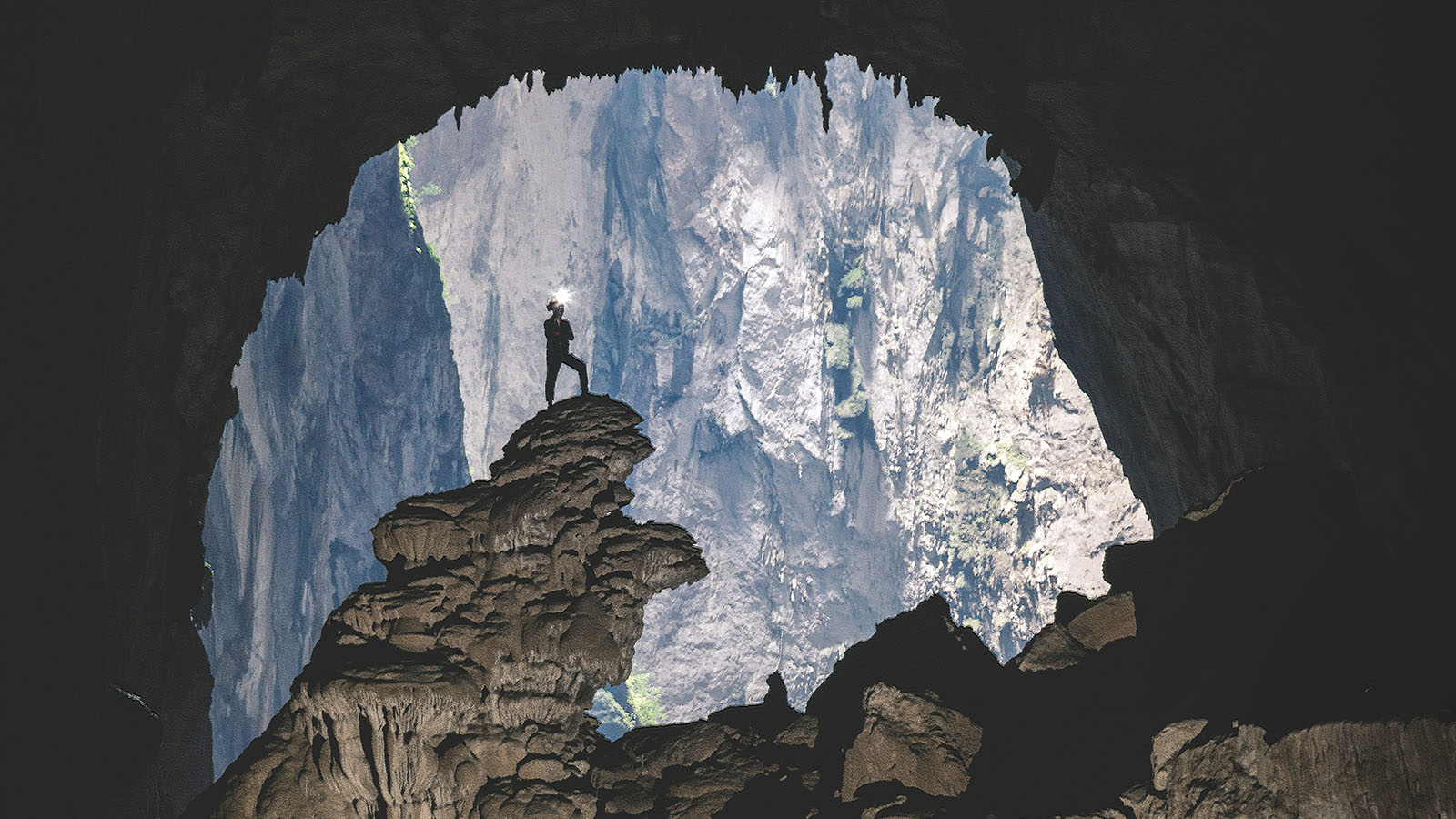





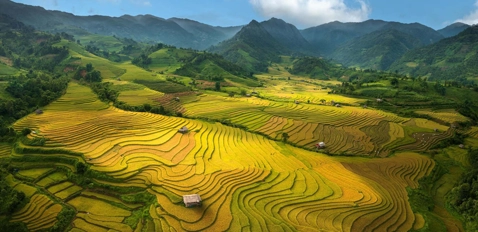




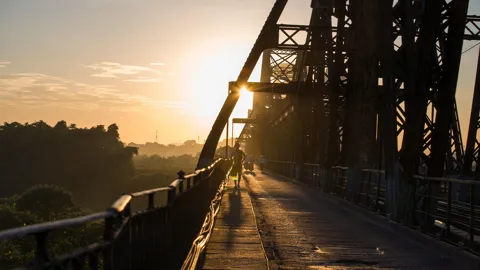

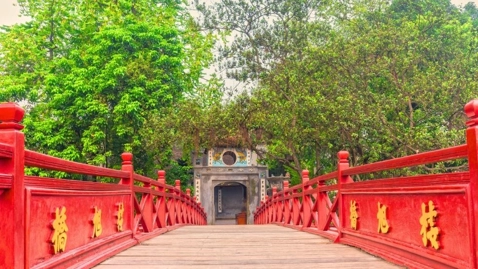
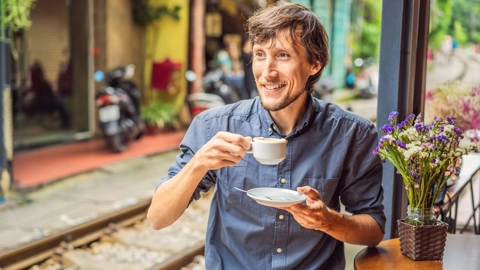
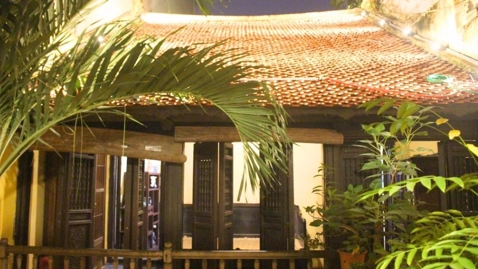
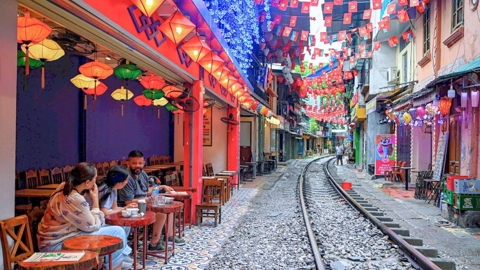


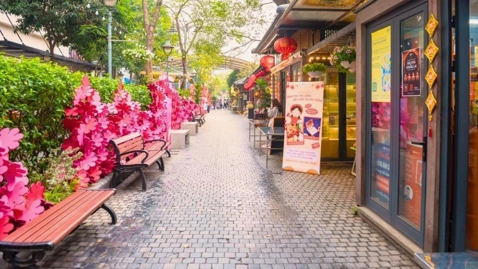
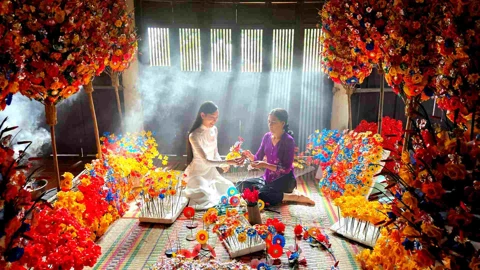














Comment